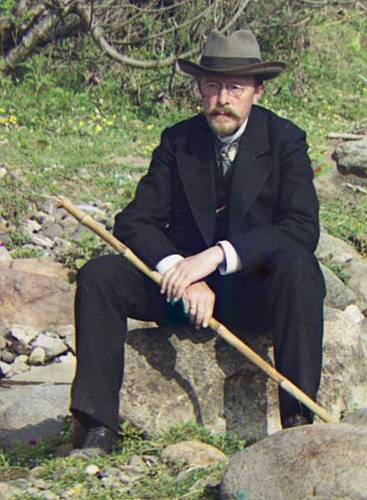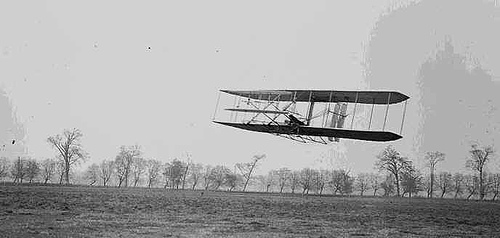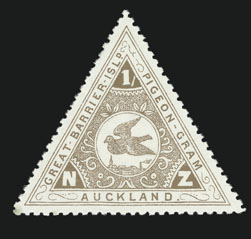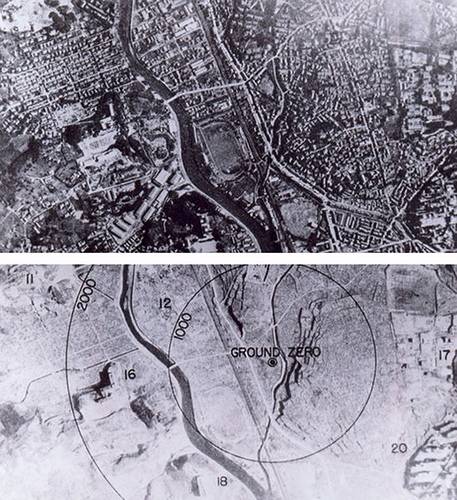Technology
Cheese!

Russian chemist Sergei Mikhailovich Prokudin-Gorskii was taking color photographs as early as 1909.
He took this self-portrait in 1915, managing to look old-timey even without sepia.
Bang!
Bulletproof vests go back to the 19th century, when a special silk vest could stop a round from a handgun.
Archduke Ferdinand was actually wearing one on June 28, 1914 — but Gavrilo Princip shot him in the neck and started World War I.
Things to Come
This will be an eventful century, if our science fiction writers are right. Here’s what to expect:
- 2008: Jason Voorhees is captured. (Jason X)
- 2012: Aliens begin to colonize Earth. (The X-Files)
- 2015: Time travelers Marty McFly and Doc Brown arrive from the year 1985. (Back to the Future Part II)
- 2019: Former blade runner Rick Deckard agrees to do one more job. Ben Richards is forced to compete on The Running Man.
- 2022: New York City has become overpopulated, with 40 million starving citizens. (Soylent Green)
- 2035: Mankind lives in gigantic underground cities. (Things to Come)
- 2050: Newspeak eclipses oldspeak. (Nineteen Eighty-Four)
- 2052: New York City launches a giant ball of unwanted garbage into space. Experts warn the ball might return to Earth someday, but their concerns are dismissed as “depressing.” (Futurama)
- 2053: World War III. (Star Trek)
- 2062: The Flintstones arrive via a malfunctioning time machine constructed by Elroy Jetson. (The Jetsons Meet the Flintstones)
- 2063: First contact with Vulcans.
- 2084: Dancing is outlawed. Flash, Strobe, Laser and Pyro escape Earth to live on Moon Base Alpha to dance in freedom. (Dancemania)
Oh, and in the late 21st century Superman leaves Earth. Better hurry and get that autograph.
Unquote
“There is no reason for any individual to have a computer in his home.” — Ken Olsen, president, Digital Equipment Corporation, 1977
Great Expectations

Orville Wright over Huffman Prairie, Ohio, Nov. 16, 1904.
Humans advanced from Kitty Hawk to the moon in 66 years.
Airmail Before Airplanes

The world’s first airmail stamps were issued for the Great Barrier Pigeon-Gram Service, which carried messages from New Zealand’s Great Barrier Island to the mainland between 1898 and 1908.
It was pretty good: The fastest pigeon, aptly named Velocity, made the trip to Auckland in only 50 minutes, averaging an astounding 125 kph. That’s only 40 per cent slower than modern aircraft.
Hoist by Their Own Petards
Inventors killed by their own inventions:
- According to the Bible, Haman was hanged by the gallows he invented.
- William Bullock (1813-1837) was crushed to death while trying to fix a rotary printing press he’d invented.
- Otto Lilienthal died in 1896 after a crash in one of his hang gliders.
- Thomas Midgley Jr. strangled in the cord of a pulley-operated mechanical bed he’d designed in 1944.
- Alexander Bogdanov, a Russian physician, died when he accepted a “rejuvenating” transfusion of blood infected with malaria and tuberculosis.
And Jim Fixx, author of The Complete Book of Running, died of a heart attack while jogging.
Fordlândia
Henry Ford was a big deal in the United States, and for a time he was a big deal in Brazil, too. In the 1920s the auto tycoon bought 10,000 square kilometers of land near the mouth of the Amazon. Rubber came from the tropics, he figured, so he’d cut out the middleman and gather it himself.
That’s big thinking, but “Fordlândia” didn’t really work out. The land was rough and unfamiliar, bugs and blight ate the plants, and the natives eventually threw aside their hamburgers and drove the managers into the jungle.
Ford tried again, but by 1945 synthetic rubber had made the whole project look silly, and in the end he took a $20 million loss. That was okay with Ford, for whom active failure was better than passive dreaming. “You can’t build a reputation,” he’d say, “on what you are going to do.”
Wrong Number
Steve Wozniak, the co-founder of Apple Computer, once obtained the phone number 888-888-8888.
He found it was unusable — he received more than 100 calls a day from children playing with phones.

